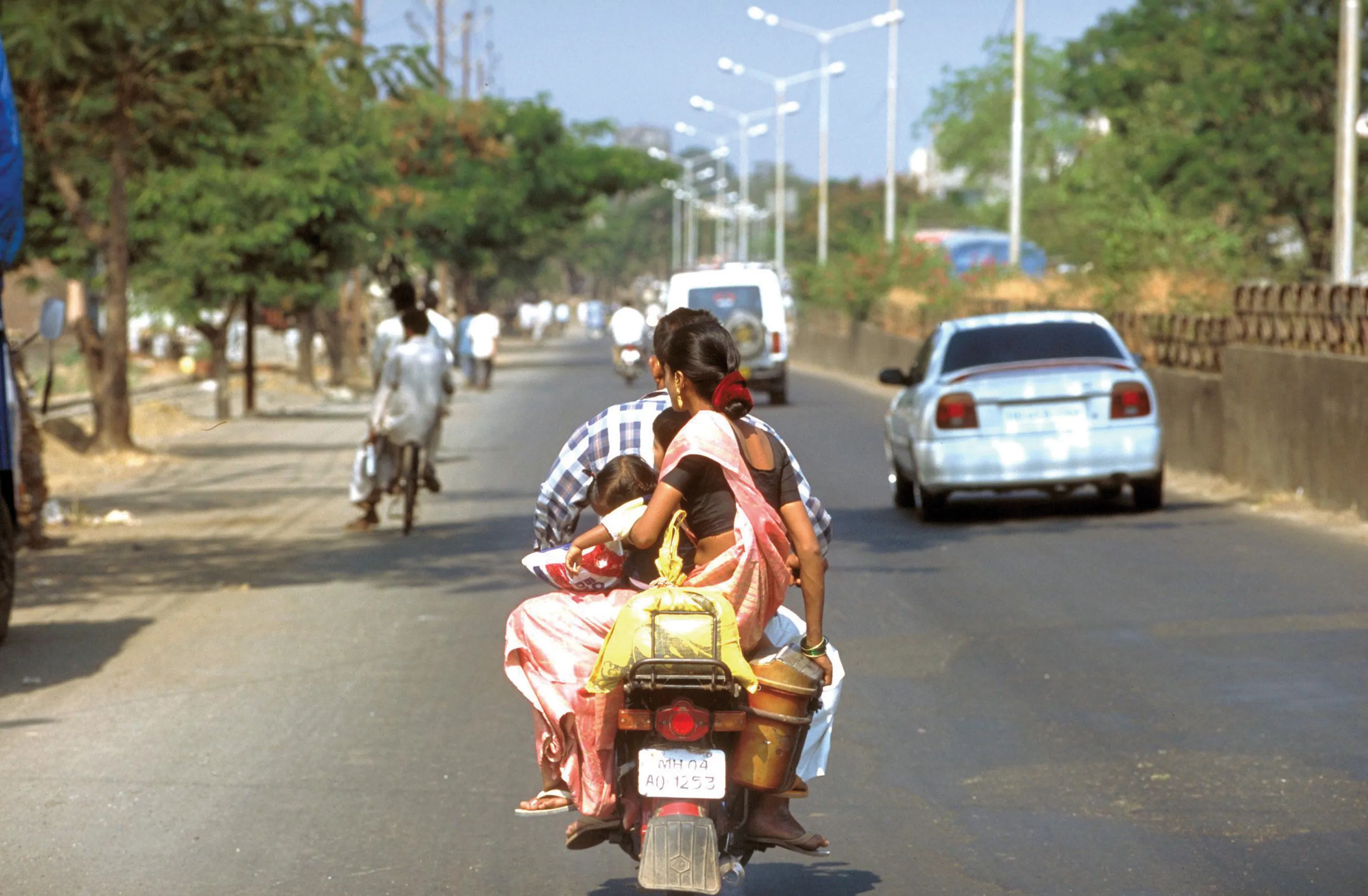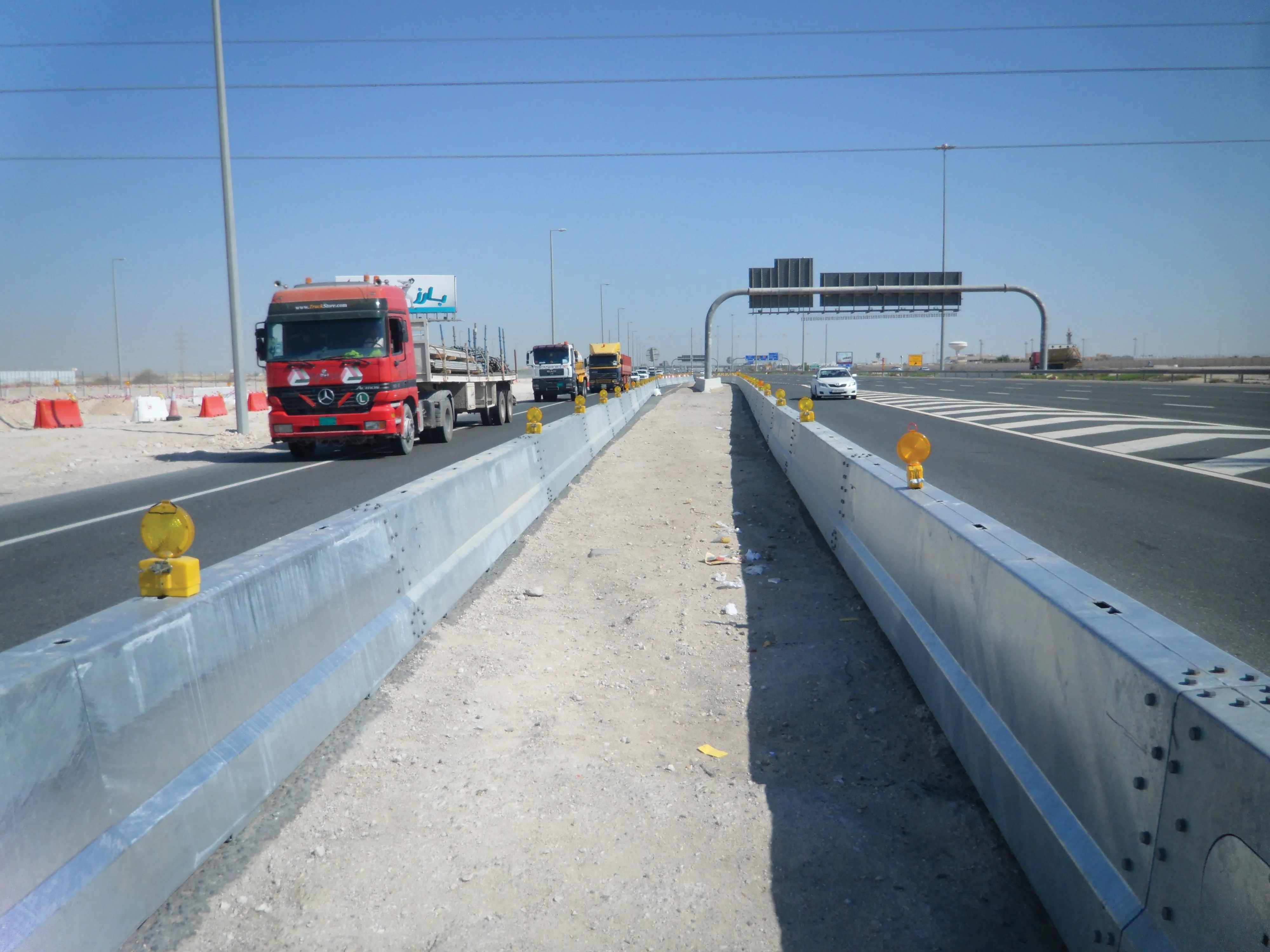
As India's economy registers 9% annual growth, promising material super-power status by mid-century, the nation is barely beginning to address a silent disaster, that of road casualties
It was Dr. P K Sikdar [a director of International Consultants and Technocrats/ICT and a former director of the
The scale of the disaster is readily described. Every year sees 100,000 people dead on India's roads, another two million removed from road to hospital. Around 7.7 million suffer minor road traffic injuries. The economic loss equates to 3% of GDP, as if economic growth were to stagnate, for four months of every year. Morbidity and mortality from road accidents is rising rapidly (see chart).
Road accident victims are predominantly males younger than 44 years, the most economically productive section of society, and in some communities 75% of families, whose main breadwinner dies in a road accident, descend into poverty. Children saved earlier from communicable and infectious diseases are becoming victims of a man-made epidemic.
The UK has a road fatality rate per 10,000 vehicles of about 1.6; for Japan the rate is 1.7; in Iran the rate, at 8.1, is still below ten. Across the southern Asian nations, the rate becomes inexorably higher with Thailand, Vietnam and Sri-Lanka all recording rates between ten and 15. But the rate for India exceeds 25, with China recording more than 26. In large measure, this reflects the sheer vulnerability of Indian road users.
While the vast majority of road fatalities in Europe, Japan and the United States involve two sets of vehicles, India's experience is very different. Around 40% of Indian fatalities are pedestrians: perhaps unsurprisingly, the next highest percentage is provided by people on two wheels, mostly cyclists, but with a depressingly high proportion of moped, scooter and motorcycle riders among them.
Typically, in a fatal collision, one of the parties has little or no personal protection. And, unregulated multi-purpose use of the only hard-top road in a particular locality is an ever-present invitation to disaster.
Why the silence?
Of all the systems that people have to deal with on a day-to-day basis, road transport is the most complex and the least safe mode of transportation. The personal and familial tragedies behind regularly occurring road crashes attract less media attention than other, less frequent but more spectacular tragedies. People die or are seriously injured, one or two at a time, in local incidents which may excite local passions for a day or so but which do not begin to register on any national radar. In effect one has a series of small silences which, in total, deserve a large shout.
India is not unique in this regard. Similar attitudes are to be found in other nations, both developed and less developed. But India stands at the brink of one of the largest expansions of a national road network of super-highways ever envisaged: hundreds of millions of US dollars are being invested to provide an internal road infrastructure consistent with long-latent aspirations to realise the full national economic growth potential, enhanced education and health services and faster eradication of poverty. By their nature, super-highways are associated with lower accident rates.
But it would be tragic if, in the necessary general expansion and improvement of the inter-state road network, no attention was paid to the current culture of small road accident silences, as they increased in line with general economic activity, and if road accidents were to be viewed as just another cost of doing business.
Current scenario
Professional domestic analysts of the current road safety scenario of India stress the following:
-
A lack of commitment and policy.
-
Inadequate funding.
-
A weak regulatory framework and diffused institutional responsibility and no mechanism for coordination.
-
Road safety is not a priority on the agendas of key ministries and public sector agencies.
-
A lack of research data: interventions are not based on research and properly presented and analysed data.
-
Poorly designed/tested vehicles.
-
Poorly maintained vehicles.
-
Poor traffic discipline and education.
-
Poorly designed/maintained roads.
-
Poor enforcement levels.
-
Often absent traffic management.
-
Mixed traffic on one road, by type and slow mingling with fast traffic,
Remedies
A coherent set of remedies exists, based on a combination of issues:
-
Local road engineering and construction
-
Set/approve road safety standard.
-
Conduct/commission road safety audits at all stages.
-
Conduct/commission black spot treatment.
-
Recommend traffic calming.
Vehicle safety design
- Set safety standards.
-
Conduct/commission vehicle safety audits.
Crash investigation/data collection/data analysis
-
Establish procedures for data collection, transmission and analysis at a variety of levels.
-
Maintain a comprehensive database.
-
Establish procedures and centres for multi-disciplinary crash investigations.
Knowledge production/research/institutional linkages
- Identify areas and subjects for research.
-
Commission research projects.
-
Create linkages between institutions at local, regional and national level.
Road user behaviour strategies/public awareness/education
-
Promote education and campaigns on road safety amongst all user groups.
-
Recognise NGOs working in the area.
Capacity building & training
- Set guidelines for building capacity and skills in the traffic police, hospitals, highway authorities, NGOs and other organisations involved with road safety.
Traffic management and enforcement
-
Encourage state governments to implement enforceable laws for helmet and seat-belt use, and against driving under the influence of drink or drugs.
-
Encourage state governments to computerise details regarding vehicle and driver licensing.
- Regulate drivers' working hours.
-
Set guidelines for driver training and testing.
-
Prescribe safety standards and infrastructure for non-motorised transport.
Post-trauma medical care
-
Set guidelines to establish a grid of trauma care centres across the country.
-
Set guidelines to create a grid of medical and paramedical facilities for dealing with highway injuries.
-
Emphasise pre-hospital and acute care and rehabilitation.
None of the above remedies represent things which are unique to the needs of India. All are relevant to the needs of a modern industrial state. In the meantime India itself can do more (and in many cases is doing more) to mitigate the silent disaster. Not all the measures require complex national coordination, nor do they require large investments. The implementation of dedicated bus lanes in Delhi is but one example. Elsewhere, the introduction of mini-roundabouts has reduced fatality rates at certain urban crossings by up to 90%. Better signage and road markings are playing their part as are less lethal barriers and better advice of road works ahead. Through such small incremental improvements, personal tragedy and national economic loss can become a relatively smaller part of the road experience.
This article is based on the data and views presented at the






